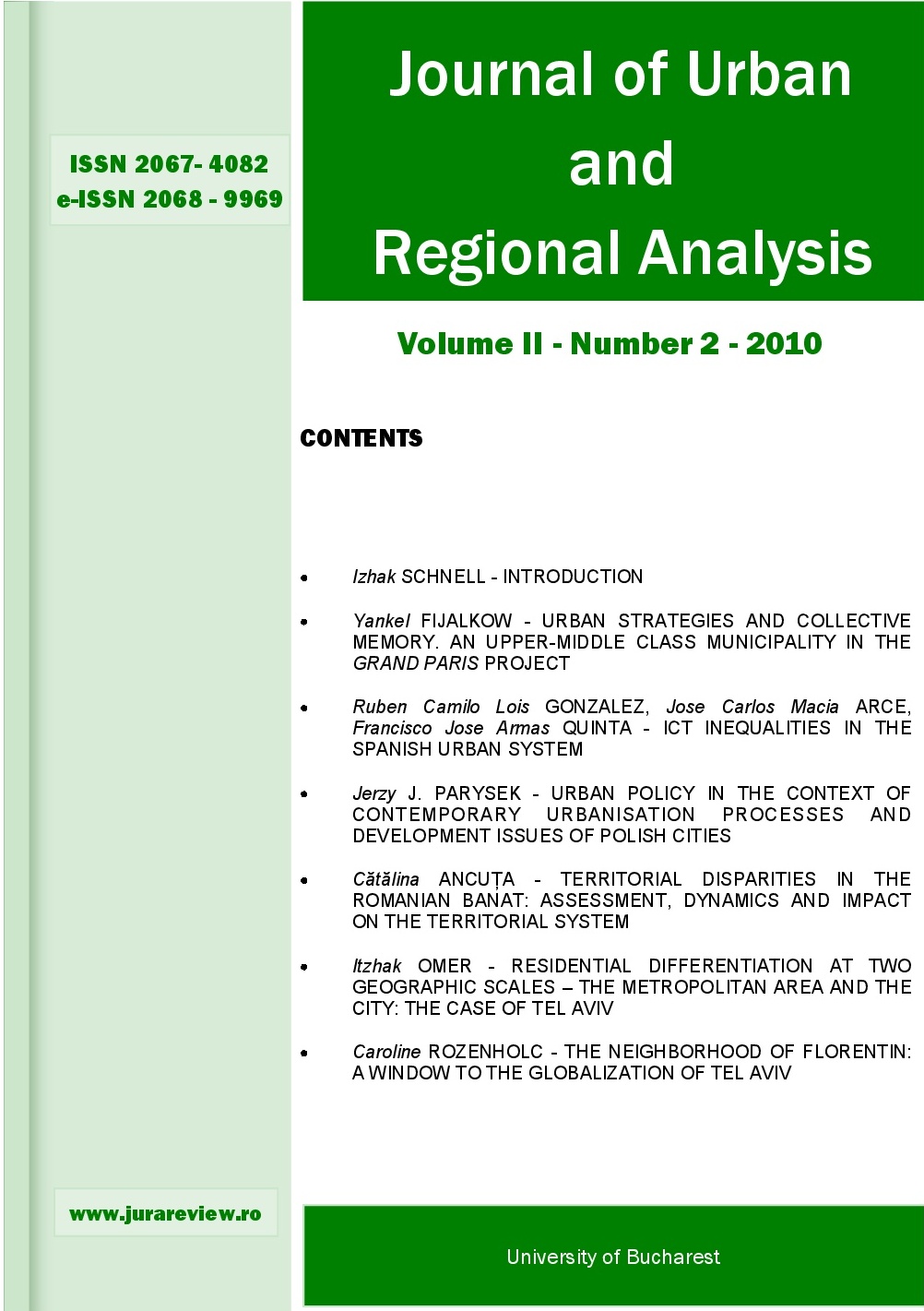ICT INEQUALITIES IN THE SPANISH URBAN SYSTEM
ICT INEQUALITIES IN THE SPANISH URBAN SYSTEM
Author(s): Ruben Camilo Lois Gonzalez, Jose Carlos Macia Arce, Francisco Jose Armas QuintaSubject(s): Supranational / Global Economy, Communication studies, Rural and urban sociology, ICT Information and Communications Technologies
Published by: Editura Universitară
Keywords: ICT equipment; Information Society; urban system; Spain;
Summary/Abstract: In the current Information Society cities enjoy a privileged position when it comes to transport and communication infrastructures. The post-industrial society has brought with it a notable change, changing from an economy based on the production of merchandise to another based on the production of services. The metropolitan areas act as key areas and markets for predominant sectors, such as finance and specialised services for business. In another way, big cities fulfill new roles in the global economy of the Information society, operating as command points in the world economy. They bring equipment together highly-qualified workers, they are big information and knowledge consumers and have been able to reinvent themselves, changing from industrial to cultural cities. They are, as well, ideal areas for big telecommunication companies and they are, for this reason, those who most benefit from information and communication technology. An important social area difference has then been introduced, with respect to other urban areas of lesser importance, or rather, with respect to rural areas that stay on the margin of the new technology revolution. In this context, it is right to ask what is happening in Spain. Why are ICT inequalities happening in Spain? Are there urban system differences before the arrival of the Information Society? Can it be said that Spanish urban areas are consolidated in the Information Society? In this article we try to outline the reality of the immersion the Information Society in the Spanish urban system, and, in the same way, bring to light a new idea of „Digital Divide‟, amongst those sectors of the population that make the most of all or a great part of the potential new technology offers and those that limit themselves to using the most basic functions, such as looking up information and using communication.
Journal: Journal of Urban and Regional Analysis
- Issue Year: 2/2010
- Issue No: 2
- Page Range: 19-32
- Page Count: 14
- Language: English

